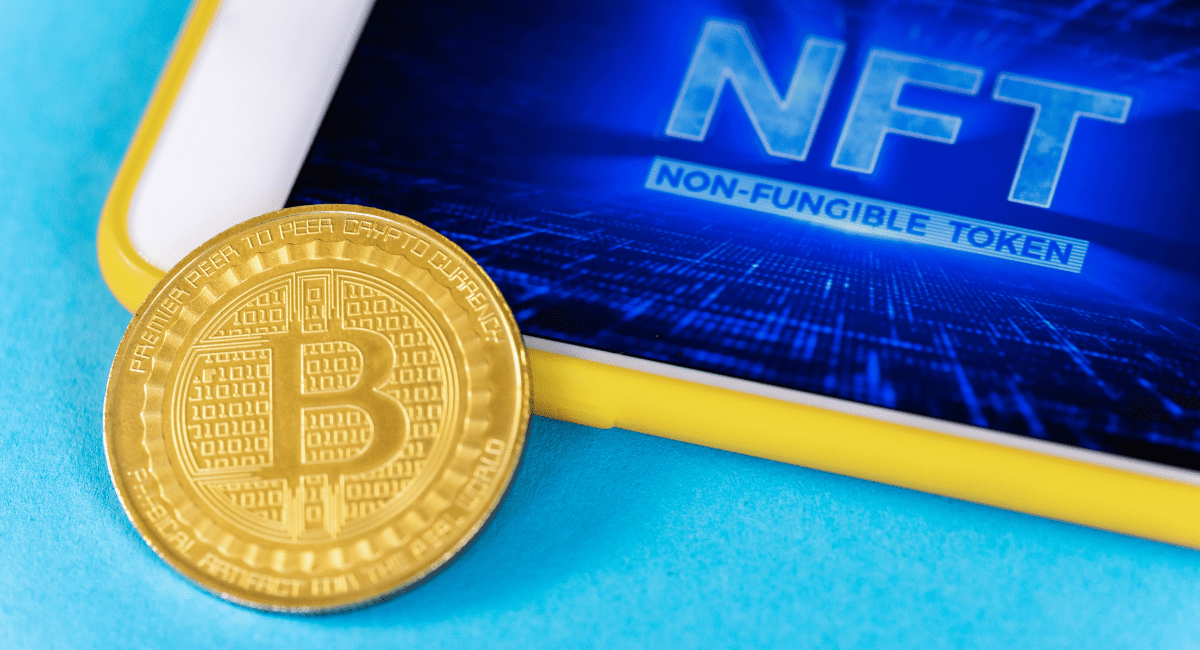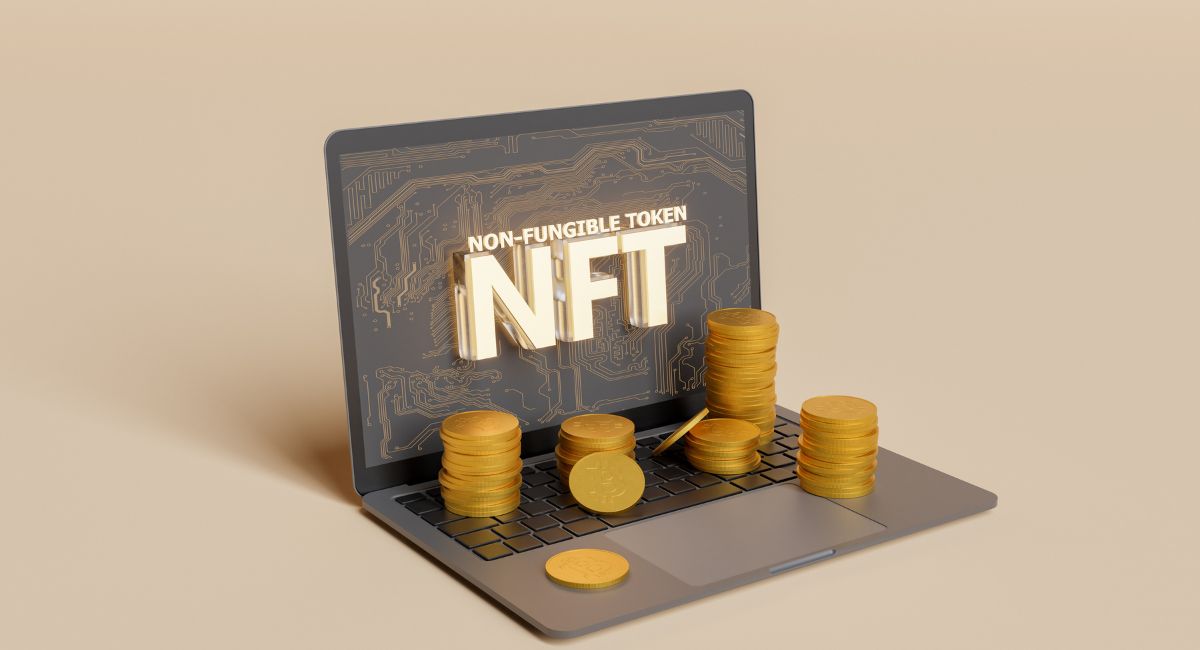Best Things You Need To Know About The NFT Market Combat With Wash Trading And Counterfeits

The Non-Fungible Token (NFT) market has witnessed an unprecedented surge in popularity, with digital art, collectibles, and virtual real estate transactions making headlines globally. However, with this rapid growth comes the inevitable challenges of wash trading and counterfeits that threaten the authenticity and integrity of the NFT ecosystem. In this comprehensive exploration, we’ll delve into everything you need to know about these issues and the strategies employed to combat them.
Understanding Wash Trading in the NFT Market:

The Non-Fungible Token (NFT) market, celebrated for its transformative impact on digital ownership and creative expression, is not immune to certain illicit practices. One such practice that poses a significant challenge to the integrity of the NFT ecosystem is wash trading. In this exploration, we’ll delve into the intricacies of wash trading in the NFT market, understanding its definition, motivations, detection challenges, and potential impact on the digital art and collectibles space.
Defining Wash Trading in the NFT Market:
Wash Trading in Traditional Markets: Wash trading is a term that originated in traditional financial markets, where it refers to the process of buying and selling a security to create the appearance of active trading and manipulate the market. The primary goal is to inflate trading volumes and generate a false sense of liquidity.
Application to the NFT Market: In the context of the NFT market, wash trading involves engaging in artificial transactions to create a misleading impression of market activity. Participants, often working collaboratively or with multiple accounts, conduct trades with the sole purpose of inflating trading volumes and influencing the perceived demand for specific NFTs.
Motivations Behind Wash Trading in the NFT Market:
- Market Manipulation: Bad actors engage in wash trading to manipulate market sentiment. The artificial increase in trading activity can create a sense of urgency and FOMO (Fear of Missing Out) among potential buyers, encouraging them to participate in what seems like a thriving market.
- Boosting Perceived Value: NFT creators and sellers may resort to wash trading to boost the perceived value of their digital assets. Higher trading volumes and increased demand can create an illusion of popularity and desirability, potentially leading to higher bids and valuations.
Challenges in Detecting Wash Trading in the NFT Market:
- Pseudonymity and Anonymity: Participants in the NFT market often operate under pseudonyms, and transactions on blockchain networks are relatively anonymous. Identifying individuals engaging in wash trading becomes challenging without access to additional contextual information.
- Complex Trading Patterns: Wash traders may employ sophisticated trading strategies to mimic genuine market activity. Detecting artificial transactions among a sea of legitimate trades requires advanced analytical tools and expertise.
- Decentralized Nature of NFT Platforms: The decentralized nature of many NFT platforms adds a layer of complexity to monitoring and regulation. Unlike centralized exchanges, there is no central authority overseeing and enforcing market integrity.
Potential Impact on the NFT Ecosystem:
- Misleading Investors: Wash trading can mislead investors and potential buyers by creating a false impression of market demand. Those unaware of the manipulative practices might make investment decisions based on distorted information.
- Erosion of Trust: The trust that underpins the NFT market’s decentralized ethos can be eroded when participants discover instances of wash trading. Trust is a cornerstone of any thriving marketplace, and deceptive practices can undermine the community’s confidence.
- Market Distortion: Genuine creators and collectors may find it challenging to navigate a market distorted by wash trading. The true value of digital assets becomes obscured, and the market loses its ability to fairly price and reward authentic creativity.
While the NFT market presents exciting opportunities for creators, collectors, and investors, it is essential to address challenges such as wash trading to ensure its long-term health and sustainability. Striking a balance between innovation and regulation, fostering transparency, and leveraging advanced technologies for detection are key components of mitigating the impact of wash trading on the NFT ecosystem.
As the NFT space continues to evolve, community collaboration, technological innovation, and regulatory engagement will play crucial roles in maintaining the integrity of the market. By understanding the nuances of wash trading and proactively implementing solutions, the NFT community can foster a transparent and trustworthy environment for the digital art and collectibles of the future.
Wash trading is the practice of artificially inflating the price of assets, like NFTs, by trading them between collaborating parties. @bitsCrunch https://t.co/nxDxLPPnTl publishes wash trading stats for over 25,000 NFT collections to aid you in making informed decisions.#NFTs pic.twitter.com/ckkzvXb7WT
— Ediong | NFT Investigator🧑💻🧐🔍🚨 (@EdiongAlex) December 30, 2023
Counterfeit NFTs: A Threat to Authenticity:

In the dynamic realm of Non-Fungible Tokens (NFTs), where digital ownership and creativity intertwine, the emergence of counterfeit NFTs poses a substantial threat to the authenticity and integrity of the marketplace. This detailed exploration aims to unravel the complexities surrounding counterfeit NFTs, outlining their definitions, common forms, challenges in detection, and the profound implications they bear on the NFT ecosystem.
Defining Counterfeit NFTs:
Counterfeiting in the Physical World: Traditionally associated with physical goods, counterfeiting involves the creation and sale of unauthorized copies or imitations, often designed to deceive consumers by replicating the appearance of genuine products.
Application to the NFT Market: In the context of NFTs, counterfeiting extends into the digital realm. Counterfeit NFTs involve the unauthorized replication or imitation of original digital assets, leading to the creation and sale of fake or unauthenticated tokens.
Common Forms of Counterfeiting in the NFT Market:
- Copy-and-Paste Replication:
- Description: Counterfeiters replicate digital art or content and present it as an original NFT.
- Challenge: Distinguishing between genuine and copied digital assets, especially when presented on different platforms or marketplaces.
- False Attribution:
- Description: Counterfeiters falsely attribute digital assets to renowned artists or creators to increase their perceived value.
- Challenge: Verifying the true origin of digital assets, as creators in the NFT space often operate under pseudonyms.
- Releasing Similar Editions:
- Description: Creating unauthorized duplicates of limited edition NFTs to deceive buyers into believing they are purchasing a unique item.
- Challenge: Discerning between genuine limited editions and counterfeit duplicates, especially in a decentralized and pseudonymous environment.
Challenges in Identifying Counterfeit NFTs:
- Immutable Ledger:
- Challenge: Once an NFT is minted on the blockchain, it becomes challenging to rectify or remove unauthorized copies. The immutable nature of the ledger complicates efforts to eliminate counterfeits.
- Pseudonymity:
- Challenge: Creators and sellers in the NFT space often operate under pseudonyms, making it difficult to trace and hold counterfeiters accountable. The lack of real-world identity verification adds to the challenge.
- Complex Attribution Chains:
- Challenge: Digital assets may pass through multiple hands and platforms, creating complex attribution chains. Authenticating the original creator and provenance of an NFT becomes intricate.
Potential Impact on the NFT Ecosystem:
- Erosion of Trust:
- Counterfeit NFTs erode the trust that is fundamental to the decentralized ethos of the NFT market. The authenticity of digital assets is a cornerstone of buyer confidence.
- Market Distortion:
- The presence of counterfeit NFTs distorts the market by creating uncertainty about the true scarcity and value of digital assets. Genuine creators and collectors may find it challenging to navigate a market muddled by counterfeits.
- Reputational Damage:
- Creators and platforms associated with counterfeit NFTs may suffer reputational damage. The discovery of inauthentic digital assets can tarnish the reputation of artists and platforms alike.
As the NFT market continues to evolve, combating counterfeit NFTs is crucial for ensuring the authenticity and credibility of digital assets. By adopting innovative solutions such as on-chain metadata, smart contracts with minting controls, and decentralized identifiers, the NFT ecosystem can fortify itself against the threats posed by counterfeiters.
A collective effort involving creators, platforms, and the NFT community is necessary to establish and maintain trust in the digital ownership landscape. Continuous adaptation, education, and the integration of cutting-edge technologies are essential to secure the future of the NFT market as a space that truly values and safeguards authenticity.
Combatting Wash Trading and Counterfeits: Strategies and Solutions:

The Non-Fungible Token (NFT) market, while offering unprecedented opportunities for digital ownership and creativity, faces persistent challenges in the form of wash trading and counterfeits. To ensure the integrity and authenticity of the NFT ecosystem, it is imperative to employ robust strategies and solutions that tackle these issues head-on. This comprehensive guide outlines effective measures to combat wash trading and counterfeits in the NFT market.
Combatting Wash Trading in the NFT Market:
- Transparency Initiatives:
- Description: Encourage NFT platforms to implement transparency initiatives, urging sellers and creators to disclose information about trading activities and collaborations.
- Benefits: Promotes openness and honesty within the NFT ecosystem, making it more difficult for wash traders to operate covertly.
- Community Oversight:
- Description: Foster community-driven oversight where users can report suspicious activities and collaborate to identify potential wash trading practices.
- Benefits: Leverages the collective vigilance of the NFT community, enabling quicker detection of unusual trading patterns.
- Algorithmic Analysis:
- Description: Utilize advanced algorithmic analysis to detect unusual trading patterns and anomalies indicative of wash trading.
- Benefits: Provides a sophisticated tool for identifying patterns that may be imperceptible to human observers, enhancing the efficiency of wash trading detection.
- Regulatory Engagement:
- Description: Collaborate with regulatory bodies and authorities to establish guidelines and standards for NFT marketplaces.
- Benefits: Engaging with regulators can bring a level of oversight that helps combat wash trading and ensures a more transparent and compliant environment.
- Educational Initiatives:
- Description: Launch educational initiatives to inform participants about the risks and consequences of wash trading.
- Benefits: Empowers the community with knowledge, creating a more vigilant and informed user base that can question and report suspicious transactions.
Combatting Counterfeit NFTs in the NFT Market:
- Verification and Certification:
- Description: Collaborate with third-party verification and certification platforms that specialize in authenticating NFTs.
- Benefits: Adds an extra layer of assurance by providing certificates of authenticity, helping buyers distinguish genuine NFTs from counterfeits.
- On-Chain Metadata:
- Description: Embed unique metadata directly on the blockchain, including information about the original creator, creation date, and other details.
- Benefits: Enhances traceability and authentication, making it more difficult for counterfeiters to replicate digital assets.
- Smart Contracts with Minting Controls:
- Description: Implement smart contracts with minting controls that prevent the creation of additional copies once a limited edition is established.
- Benefits: Curtails the proliferation of counterfeit duplicates, preserving the scarcity and value of genuine limited edition NFTs.
- Decentralized Identifiers (DIDs):
- Description: Utilize DIDs to associate real-world identities with NFT creators while preserving pseudonymity.
- Benefits: Adds an element of accountability by linking creators to their digital creations, making it more challenging for counterfeiters to operate anonymously.
- Community Oversight:
- Description: Foster community-driven oversight where users can report suspicious activities and collaborate to identify potential counterfeit NFTs.
- Benefits: Leverages the collective vigilance of the NFT community, enabling quicker detection of counterfeit digital assets.
Cross-Cutting Solutions:
- Interoperability Standards:
- Description: Promote interoperability standards that enable collaboration between NFT platforms, allowing shared data on verified creators and helping prevent wash trading and counterfeiting across different marketplaces.
- Benefits: Enhances collaboration between platforms, creating a more connected and secure NFT ecosystem.
- Educational Initiatives:
- Description: Launch educational initiatives to inform participants about the risks and consequences of wash trading and counterfeits.
- Benefits: Builds a more informed and vigilant user base, fostering a culture of responsibility and accountability within the NFT community.
- Regulatory Engagement:
- Description: Engage with regulatory bodies to establish guidelines and standards for NFT marketplaces.
- Benefits: Helps ensure compliance and provides a framework for regulatory oversight, creating a more secure and transparent NFT marketplace.
Conclusion: Navigating a Safer NFT Future:
As the NFT market continues to evolve, combatting wash trading and counterfeits requires a concerted effort from creators, platforms, and the community. Embracing innovative solutions such as on-chain metadata, smart contracts with minting controls, and decentralized identifiers can significantly enhance the security and authenticity of the NFT ecosystem.
Collaboration, education, and a commitment to transparency are paramount in creating a safer NFT space. By addressing these challenges head-on and implementing proactive strategies, the NFT community can ensure a sustainable and trustworthy future for digital ownership and creativity. The journey towards a secure NFT market involves continuous adaptation and collaboration to stay one step ahead of those seeking to exploit the burgeoning digital asset space.



























































